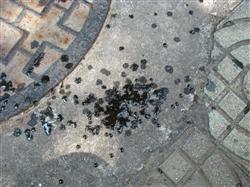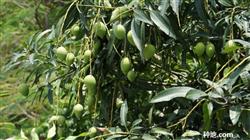How to cultivate mango grafted rootstock seedlings

How to cultivate mango grafting rootstock seedlings? How to manage rootstock seedlings A seed of mango monoembryonic variety can sprout only one seedling, while polyembryonic variety can germinate and grow into multiple seedlings. Single embryo seed has only one embryo (sexual embryo), the embryo is large, and the single seedling developed is strong; multiple embryo seed has multiple embryos, the embryo is small, and the multiple seedling developed is weak. Therefore, in the past emphasis was placed on the use of single embryo varieties as rootstocks. But the consistency of rootstock is very important to improve mango yield and quality. Single embryo seedlings are sexual seedlings, and their growth performance varies greatly. The great difference of growth and yield of different plants in orchard may be caused by rootstock. Therefore, the seeds of polyembryonic varieties should be selected after experiments to cultivate rootstock seedlings. In the past, it was recommended to use small fruit, less pulp, poor quality but full embryo as rootstock. These soil awn were mostly single embryo and strong growth, which was not ideal as rootstock for the above reasons. As for the polyembryonic varieties suitable for rootstock, they should be determined by grafting affinity, adaptability, high quality and high yield tests. The seedlings are mainly used as rootstock or breeding experiments. The seeds used to cultivate seedlings should come from the same variety, collected from mature fruits, and the seeds should be full, disease-free and insect-free. Remove and sow as quickly as possible, because mango embryos are sensitive to moisture loss and, once dried, their germinating power decreases rapidly. Seeds to strip the fibrous skin and membrane layer, with 0.1% potassium permanganate solution for 1 minute, take out to dry can be sown. Seeding medium best coarse sand or vermiculite, sand bed thickness of 30 cm. If the seedbed has been used, it should be sprayed with 1% formalin solution, covered with plastic film for 24 hours to sterilize, and then dried for 24 hours to dissipate the smell. Seed embryos can also be kept moist in the dark to germinate before sowing. When sowing, the embryo is laid flat, and the single embryo makes the embryo face the same direction, closely arranged, and the row spacing is 15 cm. After sowing, cover with a 2 cm thick layer of river sand or vermiculite. If not covered with plastic film moisture, high temperature, low air humidity, must be drenching water daily. Such as cover film shade moisture, can be 3-5 days drenching water once, not dry for degrees. In Guangzhou, sowing in June-October, seedlings can be unearthed in 15-20 days, and generally transplanted to seedling sites when there are 3-5 red leaves. Each polyembryonic seed can be divided into 3-4 seedlings, the big and small seedlings should be slightly graded, and weak seedlings should be eliminated. The time of single embryo seedling transplantation may be a little later. To cultivate high-quality seedlings, it is best to use more than 30-40 cm in length, more than 3 kg of soil nursery bags to cultivate rootstock seedlings for grafting. Because mango fibrous roots less, bagged seedlings conducive to transplant survival. Nursery in the nursery, to choose a more clayey soil, so that easy to bring mud when the seedlings. When transplanting, part of the taproot must be cut off, leaving about 10 cm, or the taproot coiled up to promote lateral roots. The soil quality of the seedling bag can be slightly sandy, but due to fertilization is not as convenient as in the field, it should be mixed with sufficient decomposed organic fertilizer to ensure good root development. After transplanting, shade should be continued until the leaves are completely transcribed, and full light should be given after the branches are mature. Single embryo seeds can also be sown directly in the nursery bag. Click for more mango growing techniques Click for more fruit growing techniques
- Prev

How to control the gummy disease of mango shoot
What is mango shoot withered gum disease? Is there any way to carry out effective prevention and control? The gummy disease of mango shoot mainly harms the shoot and trunk, causing it to wither, but it can also harm seedlings and fruits. Most of the damage to the seedlings appeared dark-brown necrotic spots from the bud contact or wound, which quickly developed up and down, resulting in scion necrosis. ...
- Next

How to fertilize autumn mango scientifically?
How to fertilize autumn mango scientifically? Please guide that autumn mango is a mango that blossoms and bears fruit in autumn. The autumn mango varieties planted in various parts of Maoming include cinnamon fragrant mango, purple flower mango and string mango. The quality and flavor of cinnamon mango is good, and the middle and upper string mango genus is suitable for local cultivation with stable yield and high yield. It is necessary to get the autumn Grain in Beard.
Related
- Moge, come on! The staff of the peasant association in the producing area of cantaloupe were frightened when the crowd gathered.
- Causes and Solutions of low Fruit setting rate of Apple
- Symptoms and control measures of passion fruit virus disease
- Fruit growing lesson: how do apple orchards keep high yields?
- Can you build orchards in the mountains? What are the pros and cons?
- How to manage the coloring period of Crisson grape?
- This paper introduces the processing technology of two kinds of fig products.
- How much is a month for retired teachers in rural areas by 2020?
- How can strawberry planting increase sugar content? We should pay attention to management in many aspects.
- What are the cultivation techniques on how to improve the yield of golden fruit?

